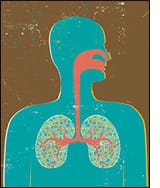Sepsis, often referred to as blood poisoning, represents a critical healthcare concern with devastating global impact. This condition occurs when the body’s immune system overreacts to an infection, triggering widespread inflammation and potentially causing organ damage and failure. Unlike many other medical conditions, sepsis does not discriminate based on age, gender, or socioeconomic status. It can develop from a multitude of common infections, including those of the lungs, urinary tract, skin, and abdomen. The initial symptoms of sepsis can be vague and easily mistaken for other illnesses, further complicating early diagnosis and treatment. These symptoms may include fever or hypothermia, rapid heart rate, rapid breathing, confusion, and extreme fatigue. As the condition progresses, it can lead to septic shock, characterized by a dangerous drop in blood pressure, multi-organ failure, and ultimately, death. Globally, sepsis is a leading cause of mortality and morbidity. The World Health Organization estimates that sepsis accounts for millions of deaths each year, surpassing the combined fatalities of all types of cancers and accidents. This staggering statistic underscores the urgent need for improved understanding, prevention, and management of this deadly condition. A significant challenge lies in the fact that sepsis can manifest rapidly and progress swiftly, demanding swift medical intervention. The key to improving survival rates hinges on the timely identification of the condition and the rapid administration of appropriate treatments, such as antibiotics, intravenous fluids, and supportive care. One of the major barriers to better sepsis outcomes is a general lack of awareness about the condition among both the general public and even healthcare providers. Many people are unfamiliar with the symptoms of sepsis, leading to delayed medical attention. Furthermore, the diversity of sepsis symptoms can make it challenging for healthcare professionals to identify the condition accurately and quickly, especially in its early stages. This underscores the importance of enhanced education and training programs for medical staff, as well as public health campaigns to raise awareness. Prevention strategies for sepsis mainly revolve around reducing the incidence of infections and promoting overall health and hygiene. Vaccination programs for preventable infections, appropriate hand hygiene, proper wound care, and judicious use of antibiotics play crucial roles in preventing many of the infections that can lead to sepsis. Research into novel diagnostics and therapies for sepsis is also of paramount importance. New biomarkers and advanced diagnostic techniques are urgently needed to enable rapid and accurate identification of sepsis, especially in the early stages of the disease. Moreover, developing targeted immunotherapies and anti-inflammatory treatments holds promise for improving patient outcomes. The fight against sepsis is a global one. It requires the coordinated effort of medical professionals, researchers, policymakers, and the public to address the myriad challenges posed by this deadly condition. By increasing awareness, implementing effective prevention programs, and investing in research and innovation, we can significantly reduce the global burden of sepsis and save countless lives. Addressing this public health crisis is imperative to ensure better health outcomes for all. The international medical community is working diligently to refine treatment protocols, implement early warning systems, and improve data collection for sepsis cases. The complexities of the condition call for continued investment in research to understand the underlying mechanisms of sepsis and to discover more effective treatments and preventative measures. These steps will be crucial in mitigating the devastation that sepsis inflicts on individuals and communities around the globe.
Global Impact of Sepsis Mortality



